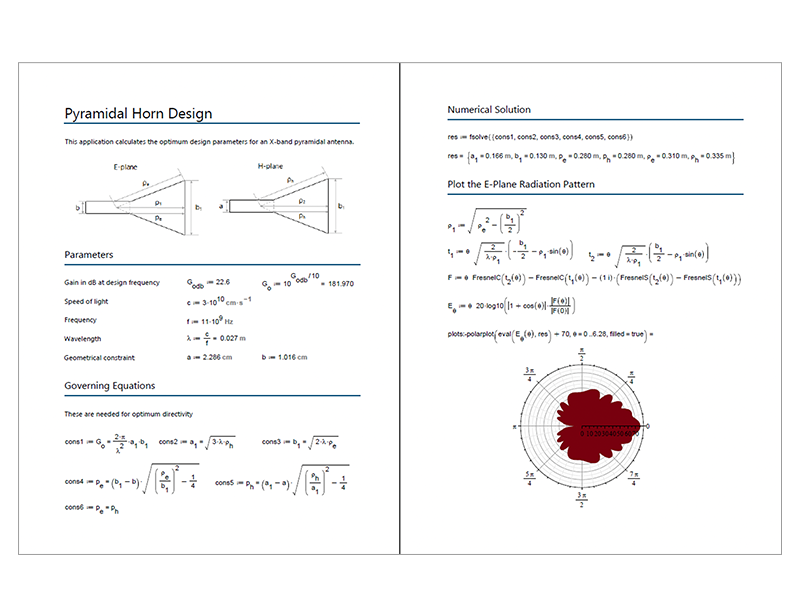
Maple
Powerful math software that is easy to use
• Maple for Academic • Maple for Students • Maple Learn • Maple Calculator App • Maple for Industry and Government • Maple Flow • Maple for Individuals





Maple Flow provides a freeform, paper-like, calculation environment.

Place math, text, plots, and images anywhere on your workspace. Easily move elements into position or reorganize them.

Maple Flow reads and evaluates math from left to right and top to bottom.
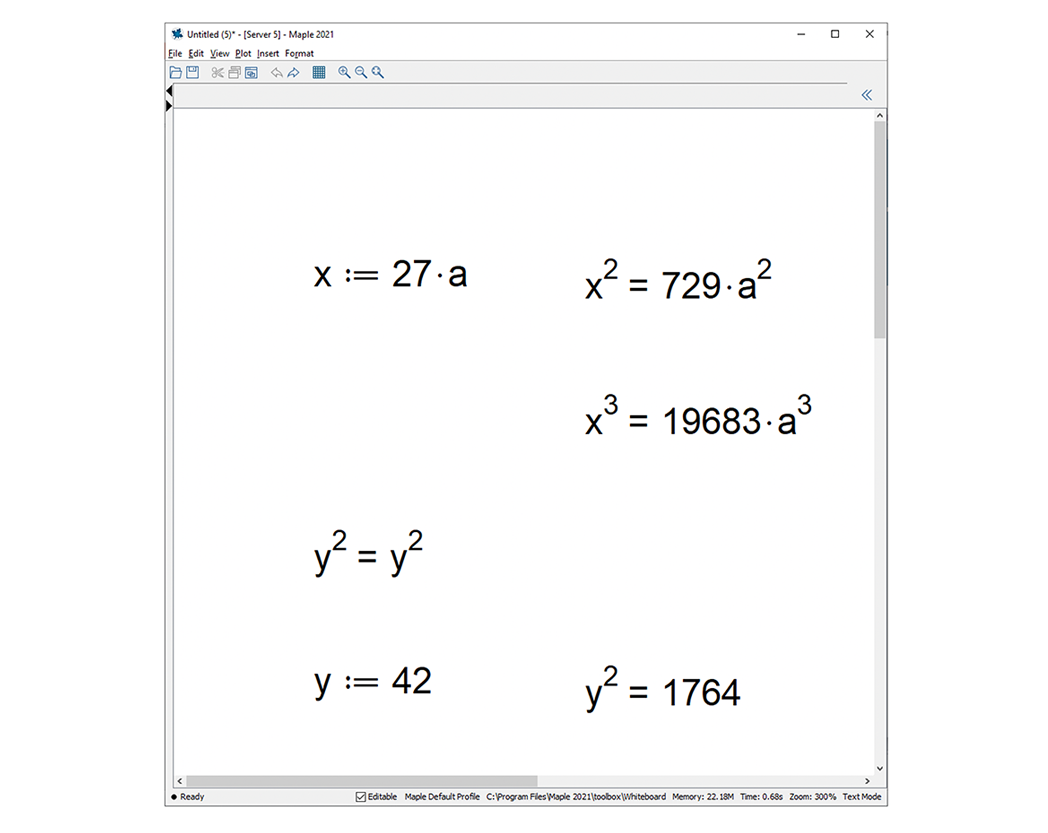
Any changes you make to math are automatically cascade throughout the entire document, so results are always up to date.

Maple Flow gives you a clean, uncluttered workspace that allows you to communicate your ideas clearly.
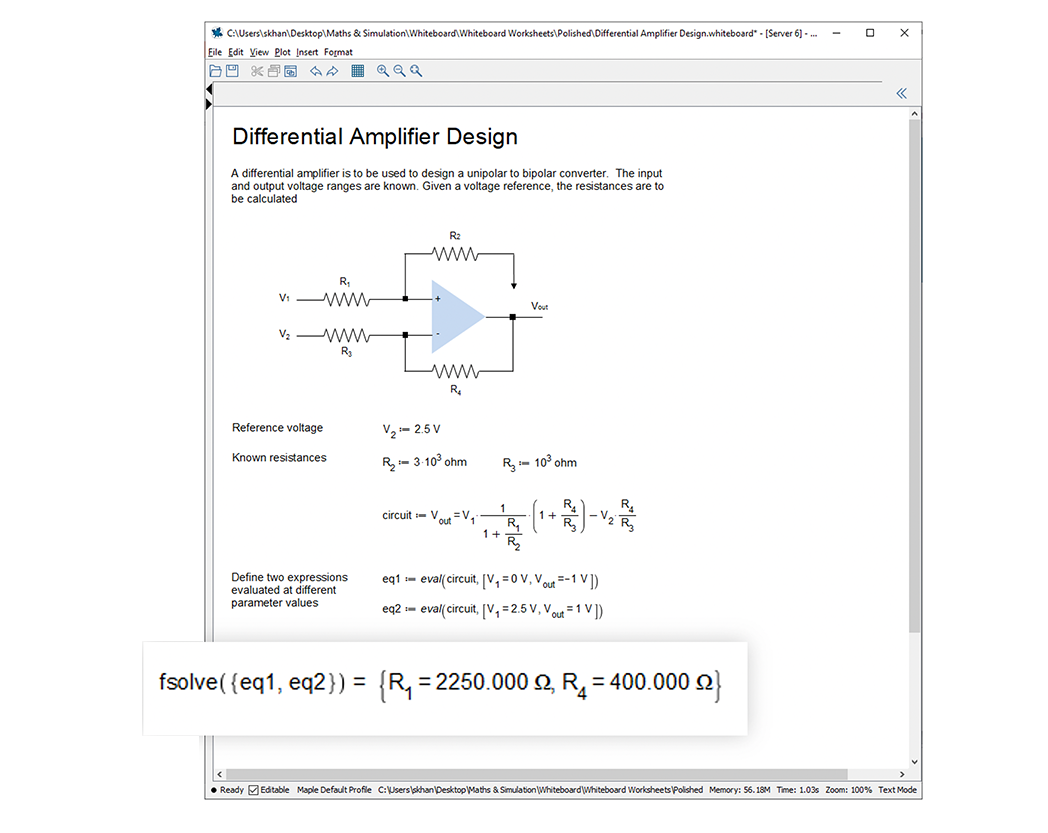
You can use nearly all of Maple’s packages, including a full-featured units system.
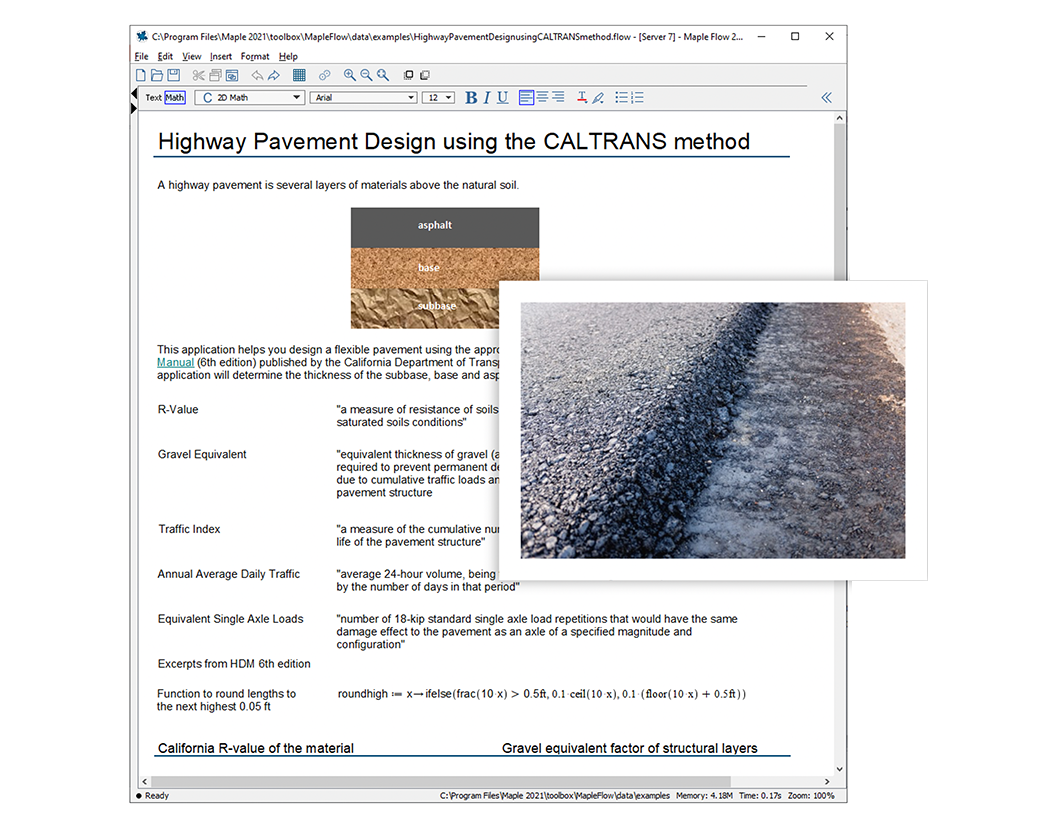
Maple Flow is the most advanced sheet of “paper” you’ll need to work on calculations. With a low learning curve, you can easily create new documents, debug your work, and lean on a comprehensive set of built-in application examples.

What you see in Maple Flow is what you’ll get when you print or share your work as PDF, and you can specify the page size and provide custom headers and footers.
Mathcad is a registered trademark of PTC Inc. or its subsidiaries in the U.S. and in other countries. MATLAB is a registered trademark of The MathWorks, Inc.
You can use Maple Flow to derive and manipulate transfer functions of electric circuits using Kirchoff’s current and voltage laws. Transfer functions can be converted to differential equations or discretized, and you can easily generate Phase and Magnitude plots.
Transfer functions can contain symbolic coefficients; these parameters can be optimized to match a target response.
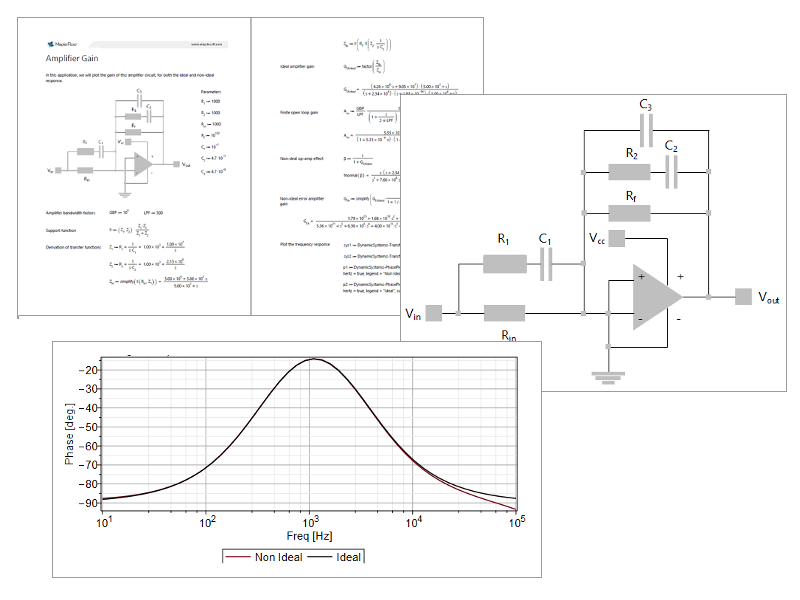
Heat is generated when current flows through a cable. The ampacity of a cable is the amount of current a cable can carry without exceeding its temperature rating. Accurately estimating ampacity is critical to minimizing the total lifetime cost of a cable installation.
This application implements the Nehers-McGrath equations and cross-checks the results against those tabulated in the National Electrical Code (2017); the good agreement means that this worksheet can be the basis of more complex cable ampacity calculations.
This application uses Maple Flow’s built-in units system; units flow from parameter definitions, through equations and into the final results.
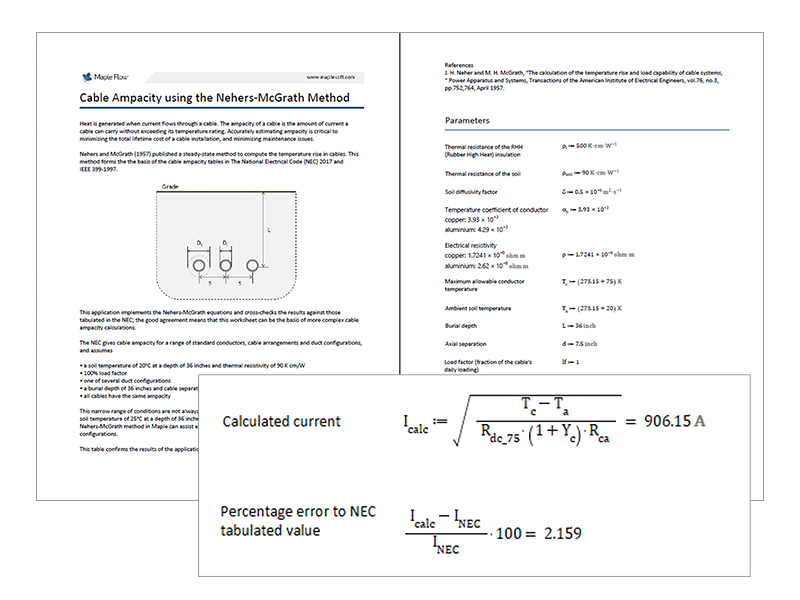
Semiconductors are complex devices, but Maple Flow helps you derive the math models to accurately describe their characteristics.
MOSFETs are a critical component of modern electronics such as smartphones and other portable devices. Low power MOSFETS are critical to switching in power supply systems.
With Maple Flow, you can turn equivalent circuit models of MOSFETS into analytical equations by writing down and manipulating the basic relationships.

Electrical components are manufactured in large quantities. Inconsistencies in the materials and the manufacturing process mean that component parameters have a statistical distribution. That is, the resistance of a batch of resistors might be described by a normal distribution.
Given the number of components in a circuit and the distribution of their parameters, the circuit may not perform as specified. This is a risk that must be identified, managed and mitigated early in the design process.
Electrical engineers often use Maple Flow for worst-case circuit analysis. You can either employ:
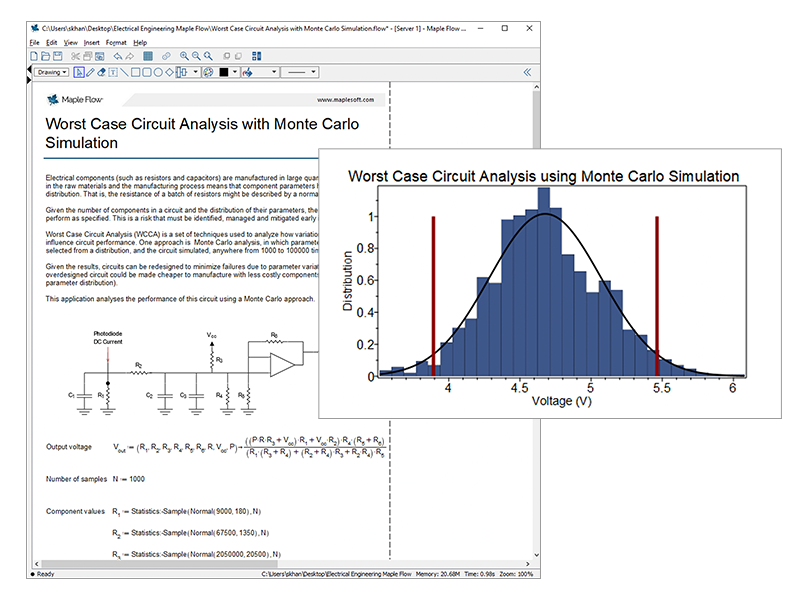
RF and microwave engineers often need to match load to the impedance of a transmission line. This known as stub matching, and involves numerically solving a nonlinear set of equations.
This requires strong numerical solvers, found in fsolve. This supersedes traditional approaches using Smith charts
The parameters in these problems usually have dimensions (for example, resistances are in ohms and distances are in meters etc). Maple Flow can carry units from parameter definitions through to the final numerical solution of equations.
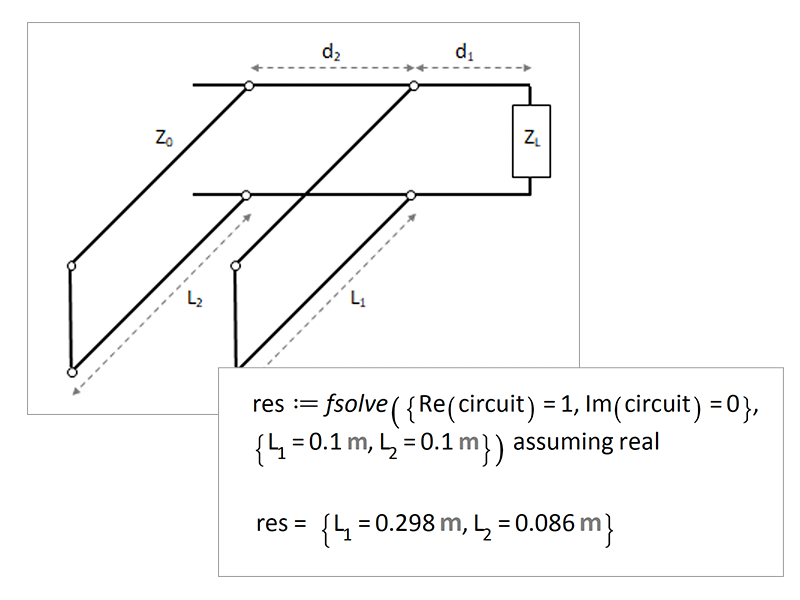
Practitioners in antenna and radar design use Maple Flow to create executable design documents that capture the spatial, temporal and spectral aspects of their designs. The documents can contain both the equations, programming and visualizations necessary for the design.
